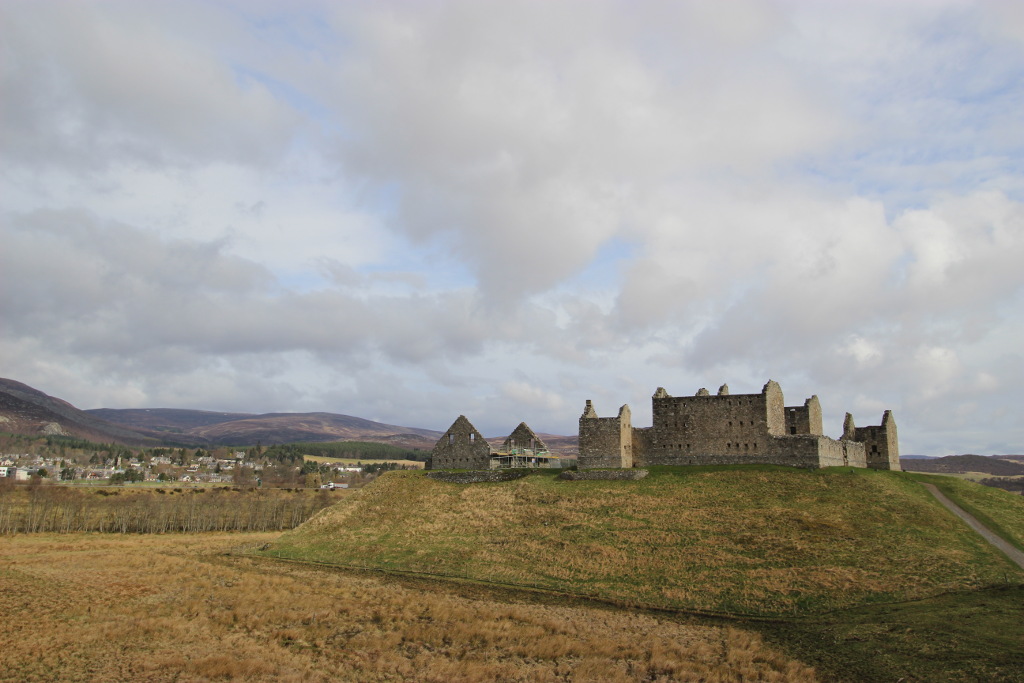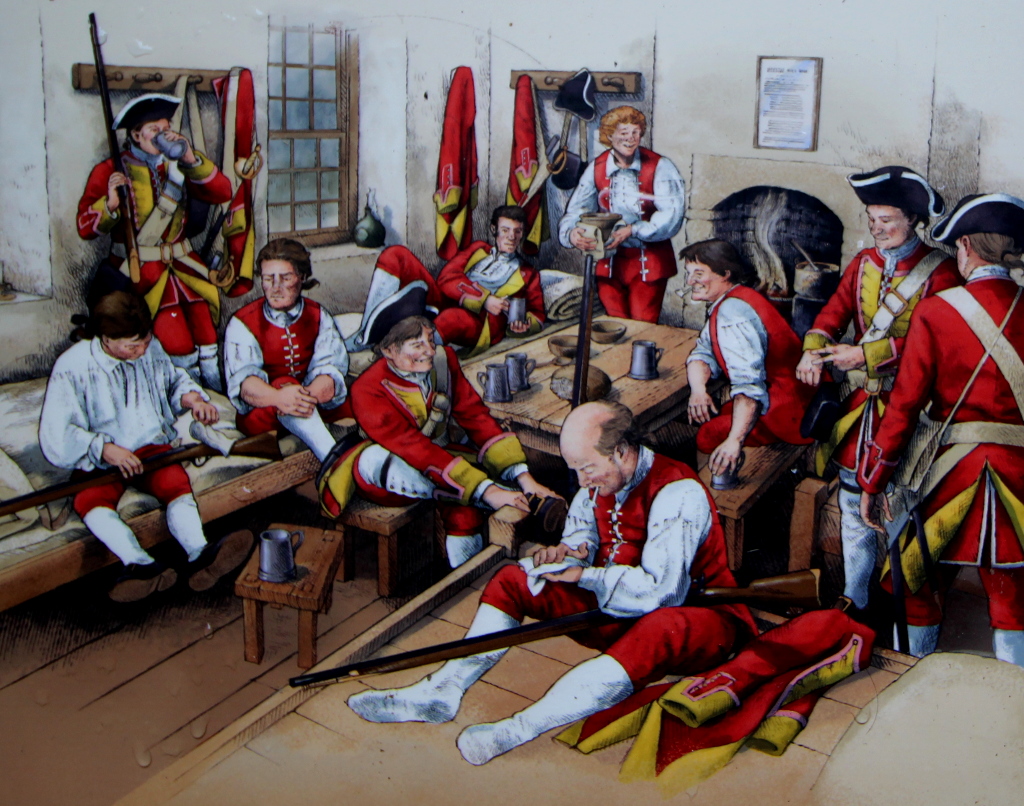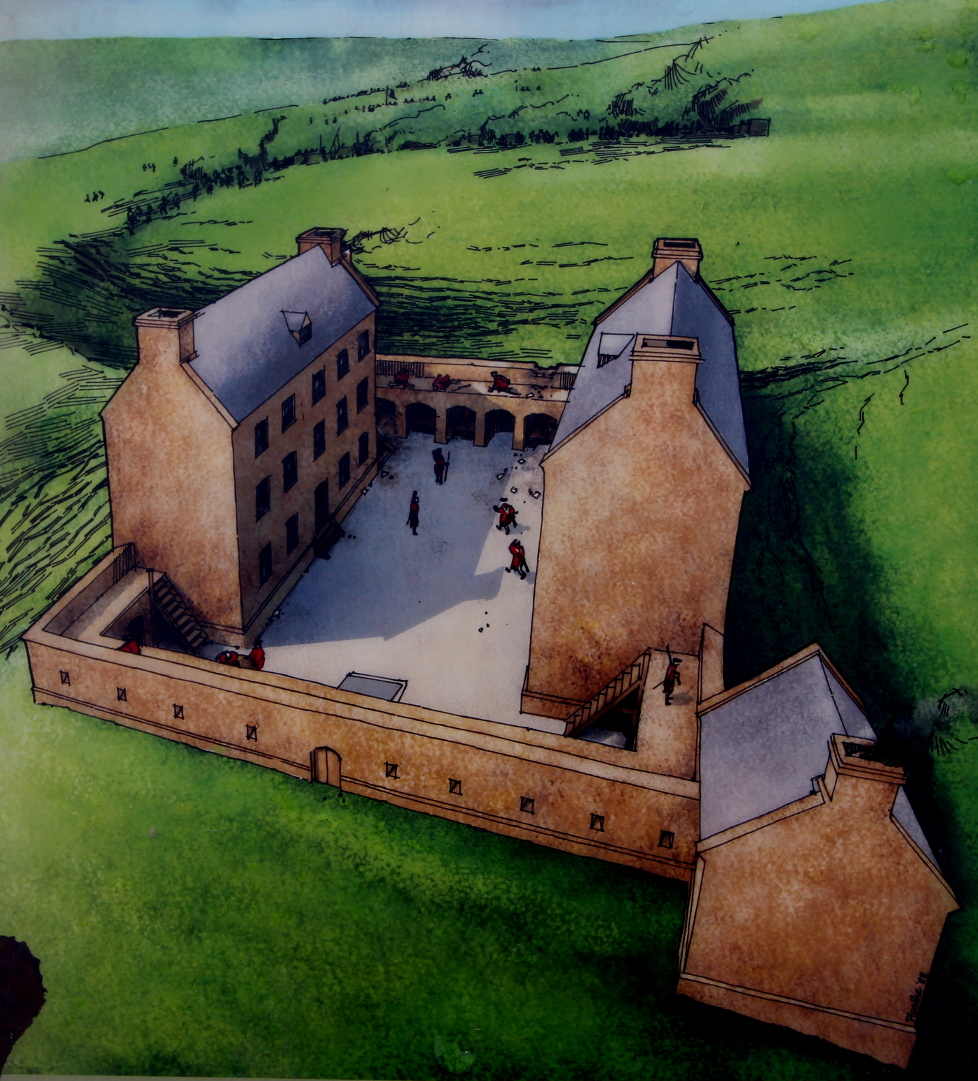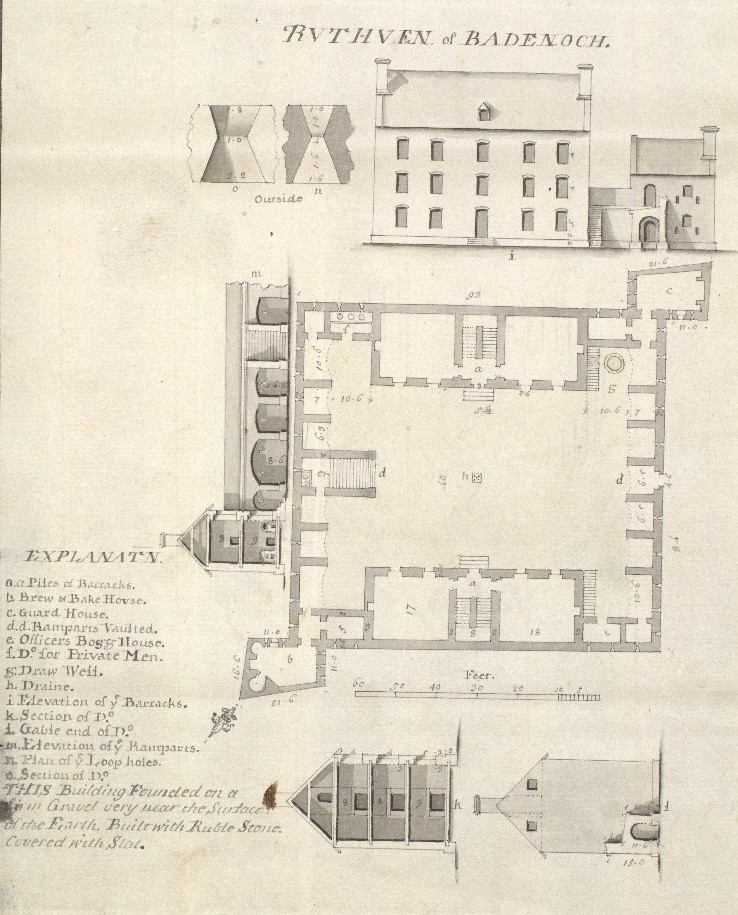Ruthven Barracks
Garrisoning the Glens
The Cairngorms were a notoriously difficult area to control. Following the Jacobite rising in 1715, the Hanoverian government ordered the construction of Ruthven Barracks and three other garrisons across the Highlands. These were "to preserve the peace and quiet of the country".

Holding a company of infantry, these barracks were built between 1719 and 1721 on the site of a ruined castle. From this location the garrison could control the river crossing and the 3 military roads built by Major-General Wade, to Inverness, Perth and Fort Augustus.
Later a stable was added for the horses of dragoons patrolling General Wade's new military road. In 1745, Ruthven was successfully defended against a detachment of Prince Charles Edward Stuart's army, but surrendered to his main force in the following year, when the barracks were burnt.
Barrack Life
The two barrack blocks face each other across the open parade-ground, where the redcoats drilled. Each block was designed to house up to 60 soldiers, 10 to a room sleeping in double beds and cooking for themselves in the fireplaces provided.
Stores were kept in the lofts and basements, the latter mistakenly provided with musket loops which were blocked up in the 1720's.
Senior officers had separate quarters in the upper floors of the towers. It is unlikely that there was ever a full garrison of 120 men here.

Bakehouse and Brewhouse
Bread and beer were produced on the premises with soldiers drawing their rations daily. The men could purchase extra if they wished:
• Beer - 6 pence a gallon
• Whiksy - 1 pence a gill
• Rum - 3 pence a half-pint
• Porter - 2 pence a bottle

